When visiting Hiroshima, undoubtedly one of the places you’ll be considering for your itinerary is the Hiroshima Peace Memorial Park. You’ve probably already heard from friends, family, or read online that it’s a must-visit destination, and having experienced it ourselves, we couldn’t agree more.
Here, you’ll learn not only about the day that the atomic bomb fell but gain an understanding of how Hiroshima was before the bombing and how it was affected for several decades afterwards. You’ll see the resilience of the survivors and how Hiroshima was rebuilt, transformed itself to the vibrant city it is today. Your visit will be a deeply moving experience, where the message delivered is that such tragedy can never be repeated, and it is likely to inspire you to reflect and cherish every moment in your life.

This guide will walk you through the key sites within the park including the powerful exhibitions at the Hiroshima Peace Memorial Museum, helping you understand their significance on your journey through one of the most important historical locations in the world.
Hiroshima Peace Memorial Park

Located in the heart of Hiroshima, the Hiroshima Peace Memorial Park (広島平和記念公園) is a reflective open green space landscape filled with monuments, memorials, and museums that tell the tragedy of the city that became the first target of an atomic bomb.
It honours those whose lives were lost and conveys a message: that the suffering caused by war should never be repeated, and peace is something that we all have a responsibility to nurture for future generations.
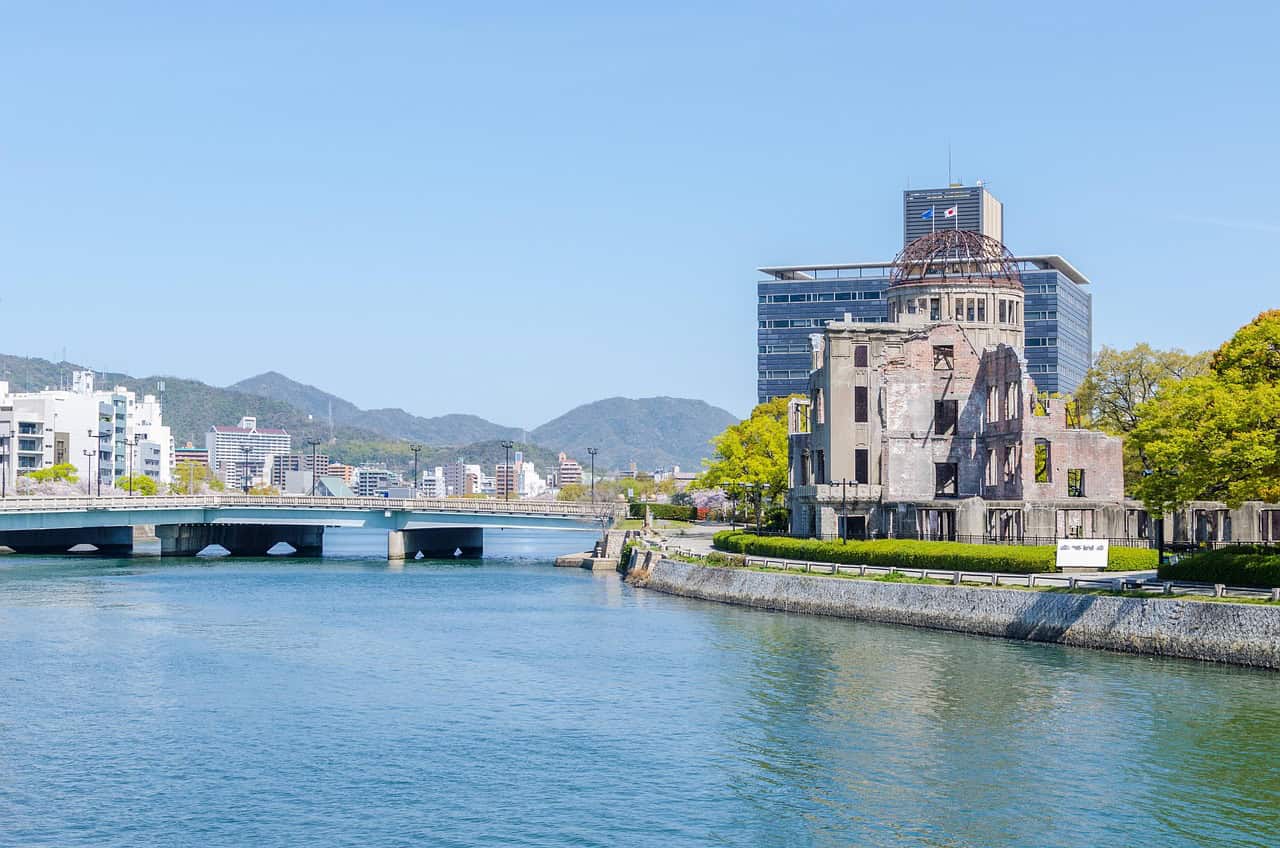
There’s no set order for exploring the park, so we began by going to the Atomic Bomb Dome (Genbaku Domu 原爆ドーム).
Walking along the path by the Motoyasu River (元安川) on the opposite side of the Atomic Bomb Dome building gives you a clear viewpoint and you can spot trams crossing Aioi Bridge (相生橋), which was the intended target of the bomb, as the original bridge was formed of two bridges that intersected to make a T-shape and could be easily recognised from the air.
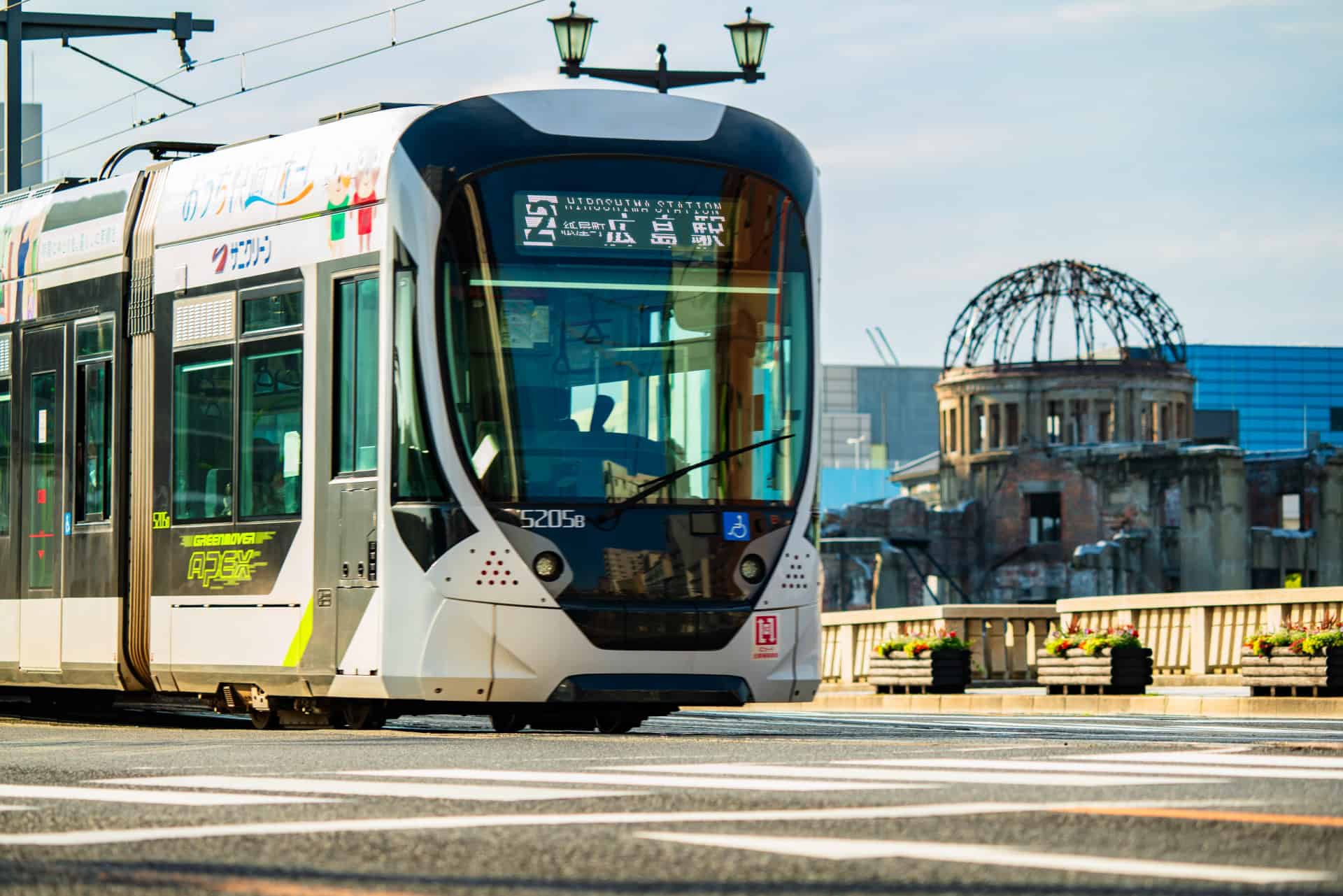
Atomic Bomb Dome (Genbaku Domu)
The most iconic symbol of the Hiroshima Peace Memorial Park has to be the Atomic Bomb Dome (Genbaku Domu 原爆ドーム).
You can walk across Aioi Bridge, and then continue along the path past the Atomic Bomb Dome, viewing the closed-off skeletal remains of what was once the Hiroshima Prefectural Industrial Promotion Hall, designed by Czech architect Jan Letzel.
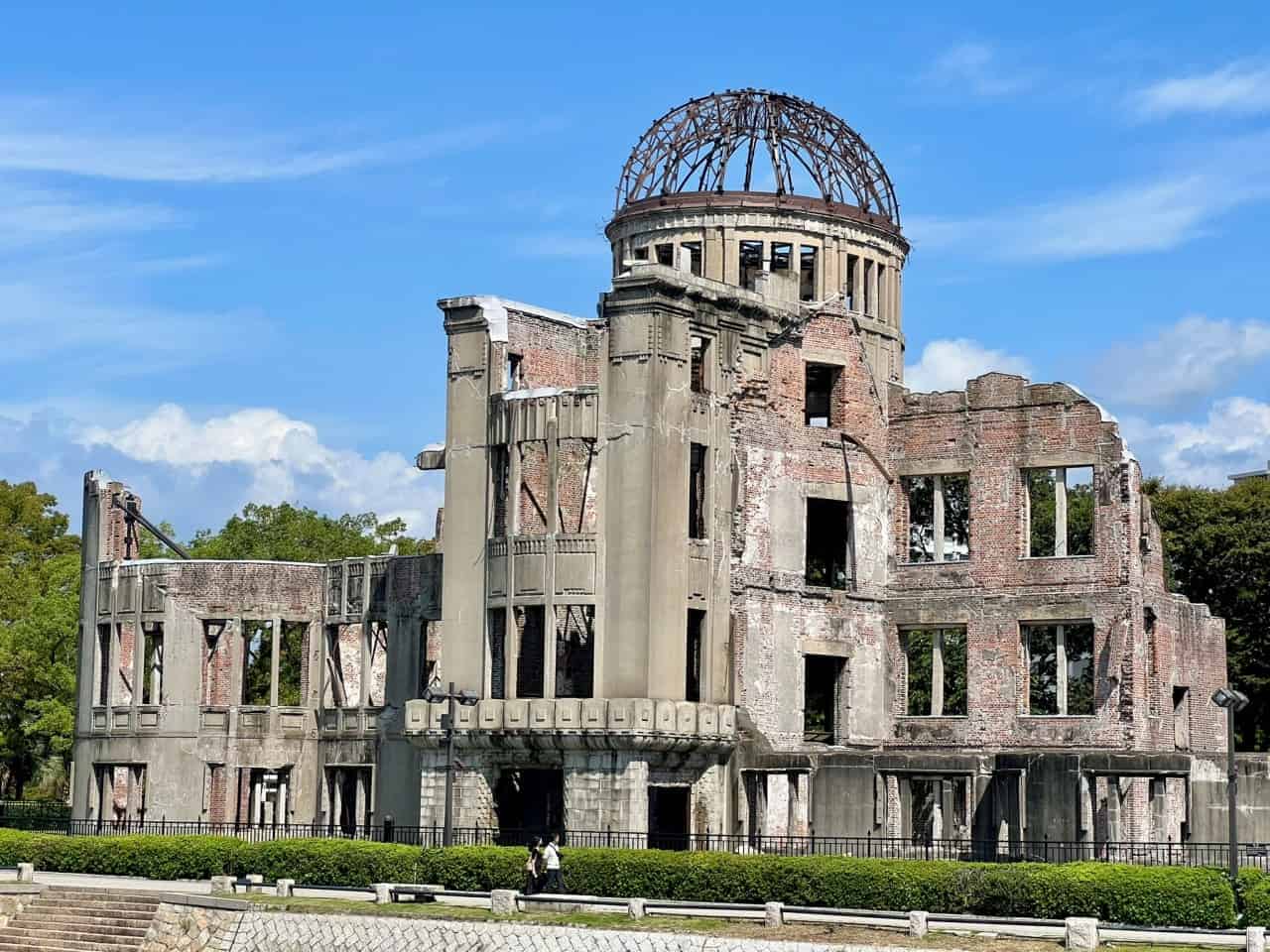
On August 6th 1945, the world’s first atomic bomb used in warfare exploded approximately 600 metres above and 160 metres from the building, instantly destroying the city.
Since the atomic bomb exploded almost directly overhead, the Dome’s vertical columns withstood much of the downward force, allowing it to survive as one of the few structures still standing near the hypocenter.
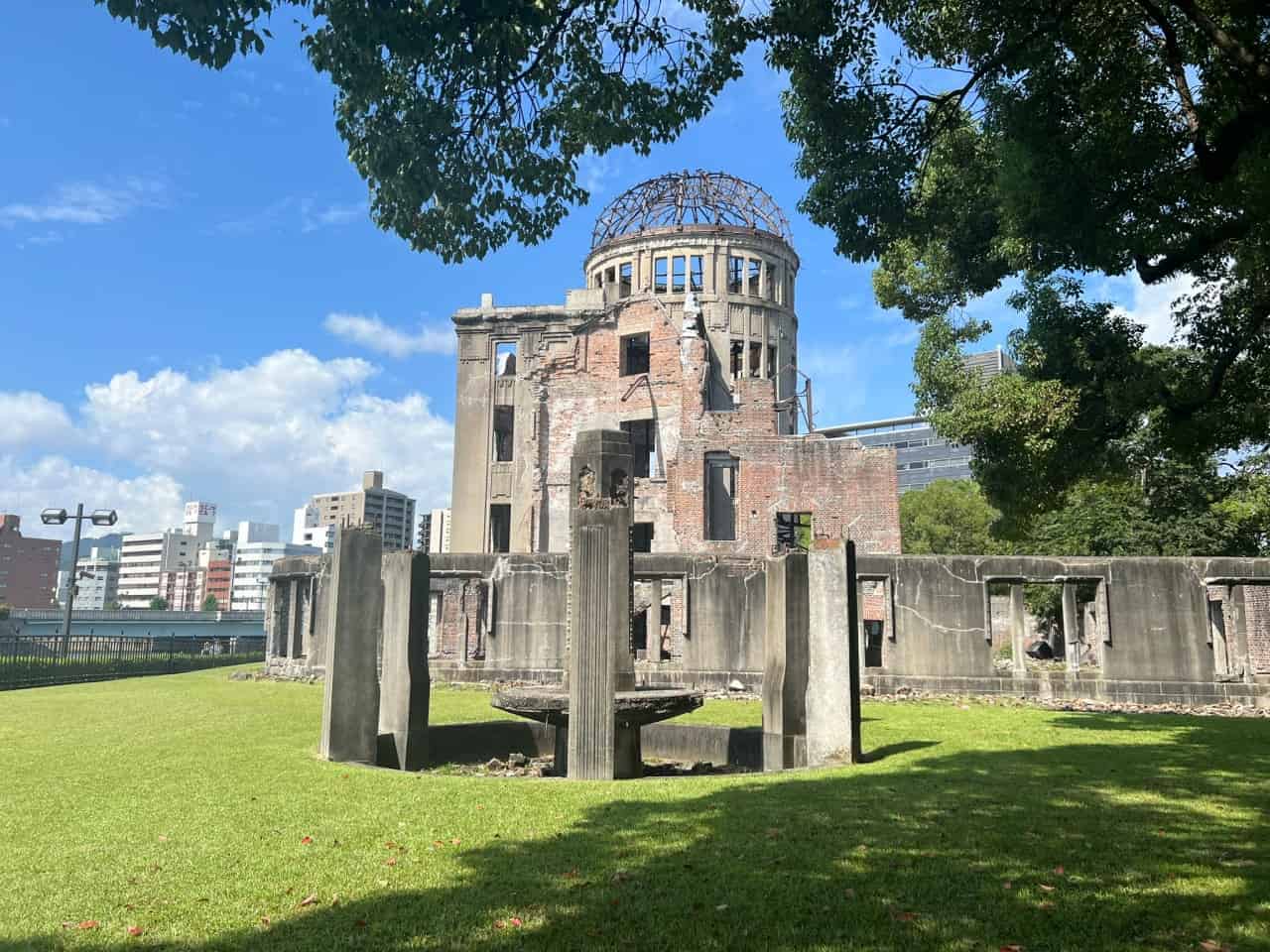
Today, it remains a powerful symbol of Hiroshima’s past and is recognised as a UNESCO World Heritage Site, drawing visitors from around the globe.
Memorial Tower Dedicated to Mobilised Students
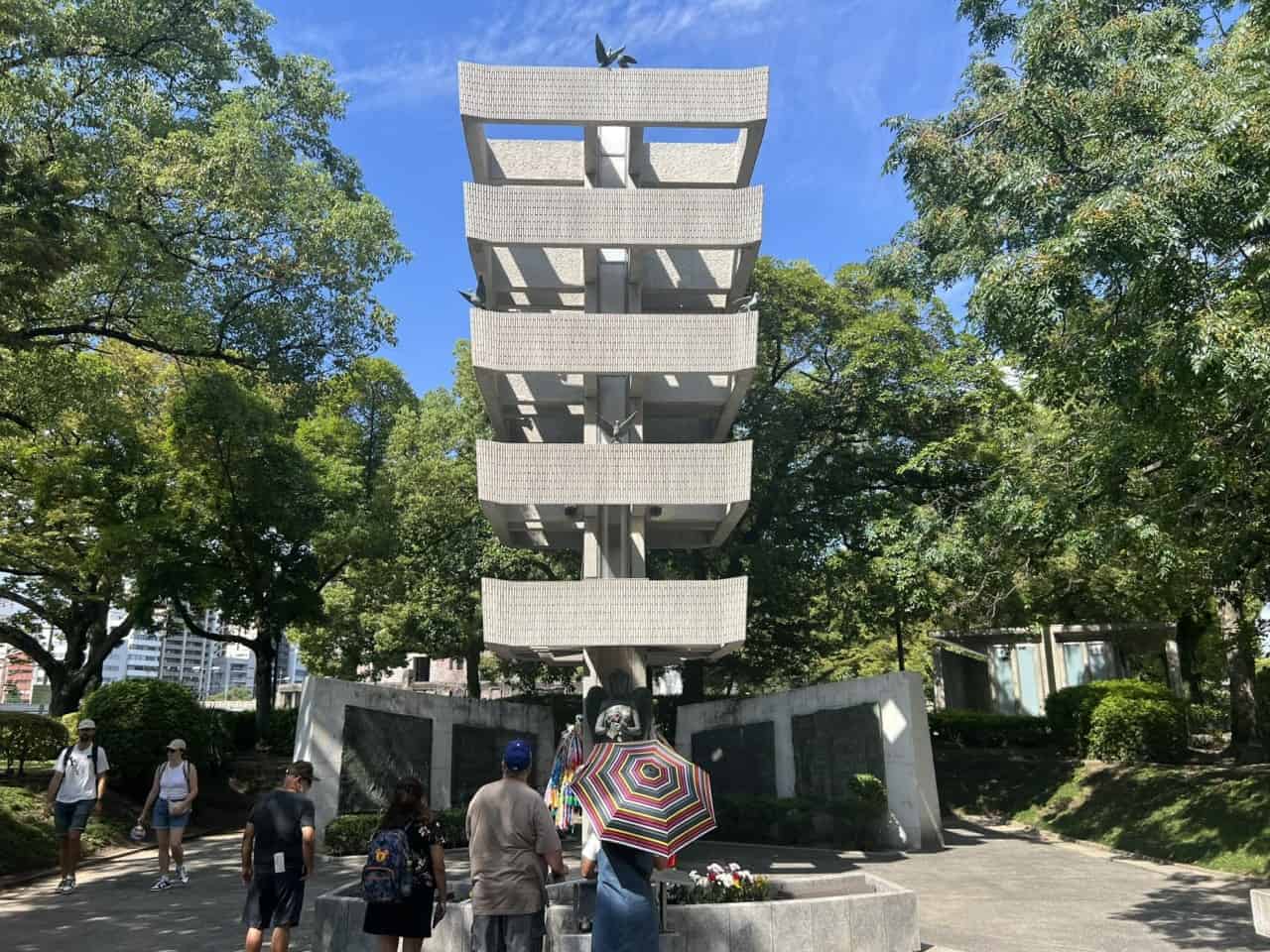
Just south of the Atomic Bomb Dome, tucked among the trees in the Hiroshima Peace Memorial Park, stands the Memorial Tower Dedicated to Mobilised Students (動員学徒慰霊塔).
This 12-metre tall grey granite tower holds a list of the names of over 6,300 students who died on the day of the bombing. Many of these young students, aged 12 and up, were mobilised to help clear open spaces to stop fires from spreading during air raids.
At its base is the Goddess of Peace, sculpted by Katsuzo Entsuba, and the central column holds a candle to comfort the souls of the fallen.
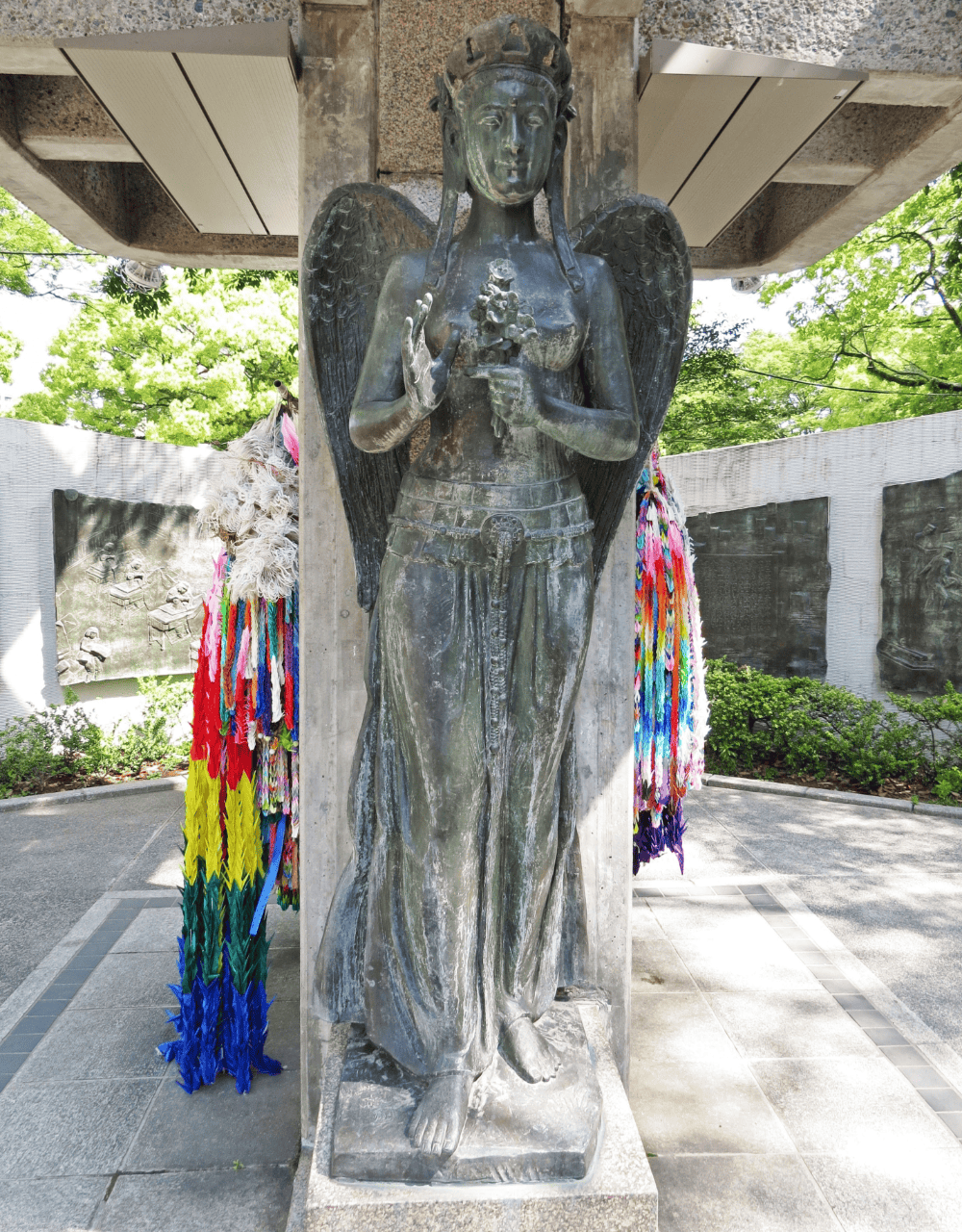
We then crossed back over the Motoyasu Bridge to walk to the Flame of Peace.
If you want to see the monument marking the actual Hiroshima Atomic Bomb Hypocentre first, visit the Atomic Bomb Dome before going to the Memorial Tower Dedicated to Mobilised Students which is just a couple of minutes’ walk away from each other.
Flame of Peace and Memorial Cenotaph

Walking from the bridge, you’ll see the Flame of Peace (平和の灯), at the north end of the Pond of Peace, sitting on a pedestal representing two hands opening outwards.
The low walls and neatly trimmed hedges surrounding it creates a reflective space, often shared with other visitors, including school groups passing by.
The flame has burned continuously since 1964, and not only symbolises peace but aspires for global disarmament and will remain alight until the day when the world is free of nuclear weapons.
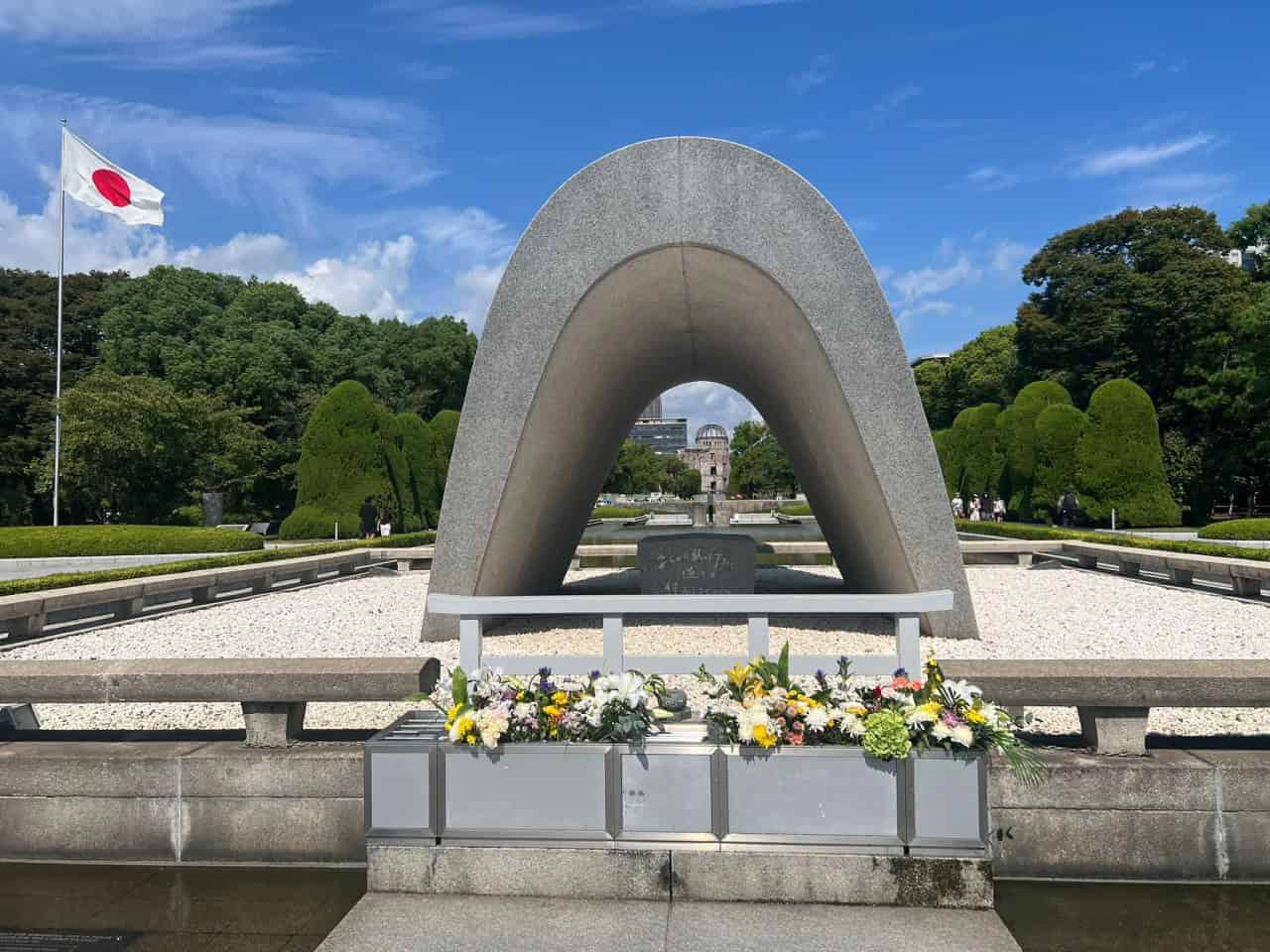
At the other end of the Pond of Peace is the arch-shaped Memorial Cenotaph (広島平和都市記念碑 / 原爆被爆者慰霊碑), the focal point for remembrance within the Hiroshima Peace Memorial Park, inscribed with the names of all the known victims of the atomic bombing.
Designed to shelter the souls of those lost, and bears the words, “Let all the souls here rest in peace, for we shall not repeat the evil (error),” with ‘we’ referring to all human being rather than any particular nationality, keeping the focus on the victims of Hiroshima.
From the sleek arch-shaped Cenotaph located at the centre of the Hiroshima Peace Memorial Park, visitors can see a clear alignment through the Flame of Peace and the Atomic Bomb Dome — a deliberate architectural design symbolising a path from mourning towards hope and remembrance.
Hiroshima Peace Memorial Museum
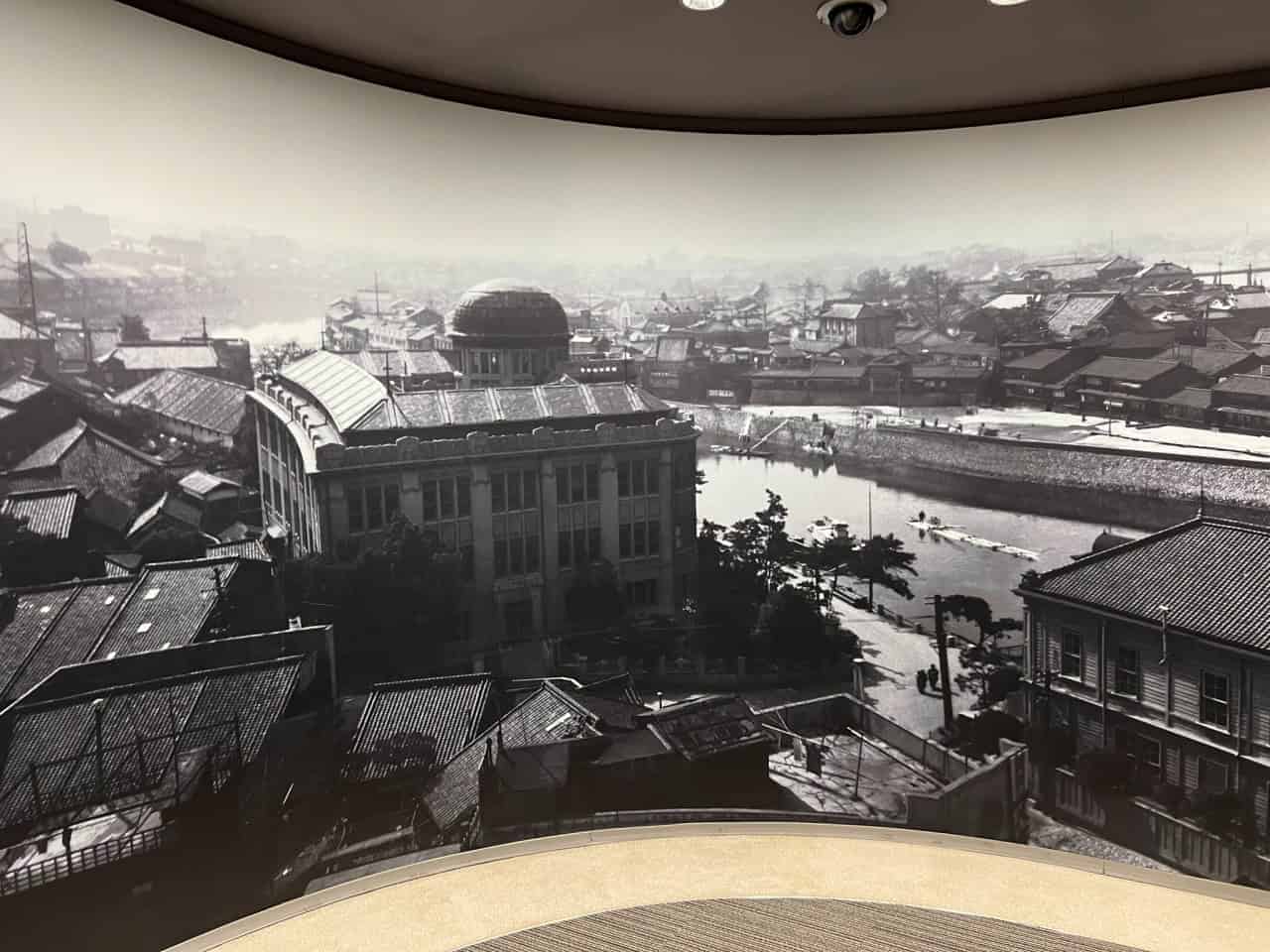
No visit to the Hiroshima Peace Memorial Park is complete without stepping into the Hiroshima Peace Memorial Museum (広島平和記念資料館), one of Japan’s most visited and emotionally powerful museums.
A few minutes’ walk from the Memorial Cenotaph, the Hiroshima Memorial Museum is truly unforgettable.
Inside the Permanent Exhibition takes you through what happened to the victims on the day of the bombing and what happened in the months and years after.
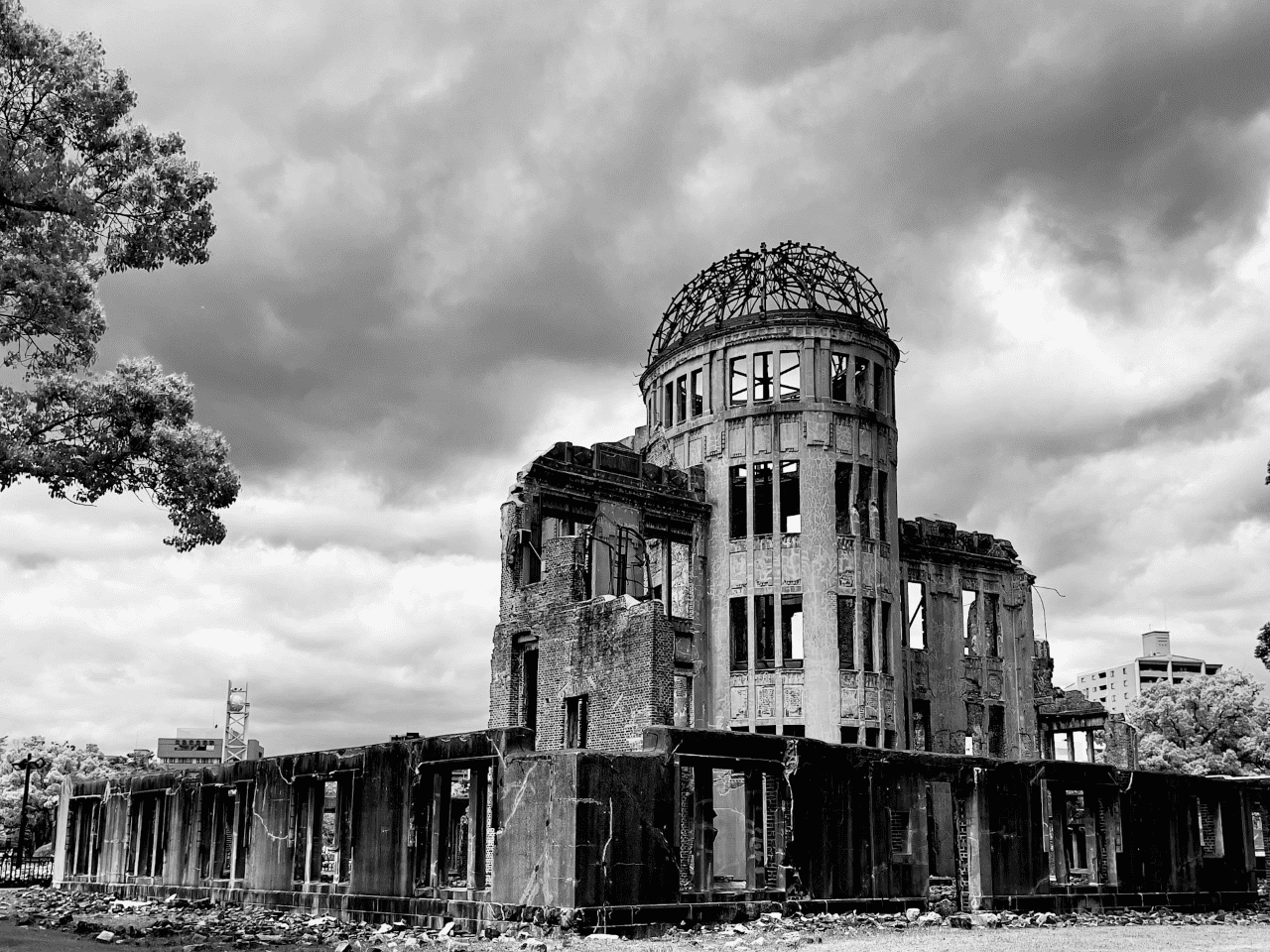
The exhibition is really emotional and often graphic, and it’s hard not to feel a deep sadness, especially when viewing the personal stories, photographs and artifacts of those affected.
However, it’s absolutely worth visiting. Seeing the resilience of the survivors is deeply moving, and it leaves you reflecting on the true cost of war to appreciate every moment of life.
After you exit the Permanent Exhibition, other exhibitions include video testimonies of the Atomic bomb survivors, and background to the creation of the atomic bomb for warfare, and why Hiroshima was chosen as the first target city in Japan.
Note: The museum can get quite busy with school groups and visitors, so we’d recommend going earlier in the morning and booking a ticket online before you go.
Children’s Peace Monument
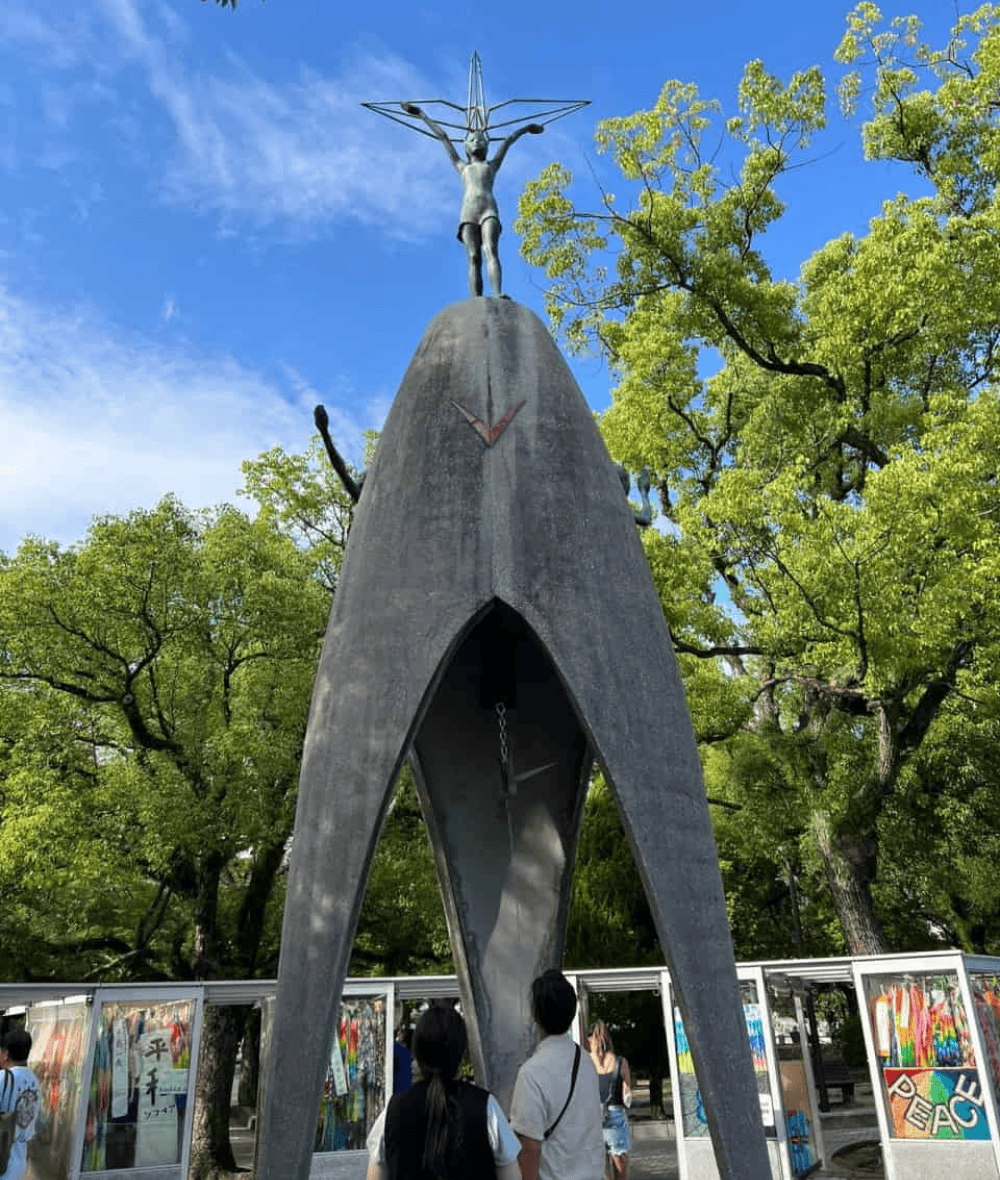
After the Hiroshima Peace Memorial Museum, we made our way to the Children’s Peace Monument (原爆の子の像), another deeply touching structure within the Hiroshima Peace Memorial Park, located just across the road north of the Flame of Peace.
The monument honours Sasaki Sadako, who died from leukemia caused by the bombing. While in hospital she learned of the Japanese legend that folding 1000 cranes grants a wish, and she then began folding them in hopes of recovering her health.
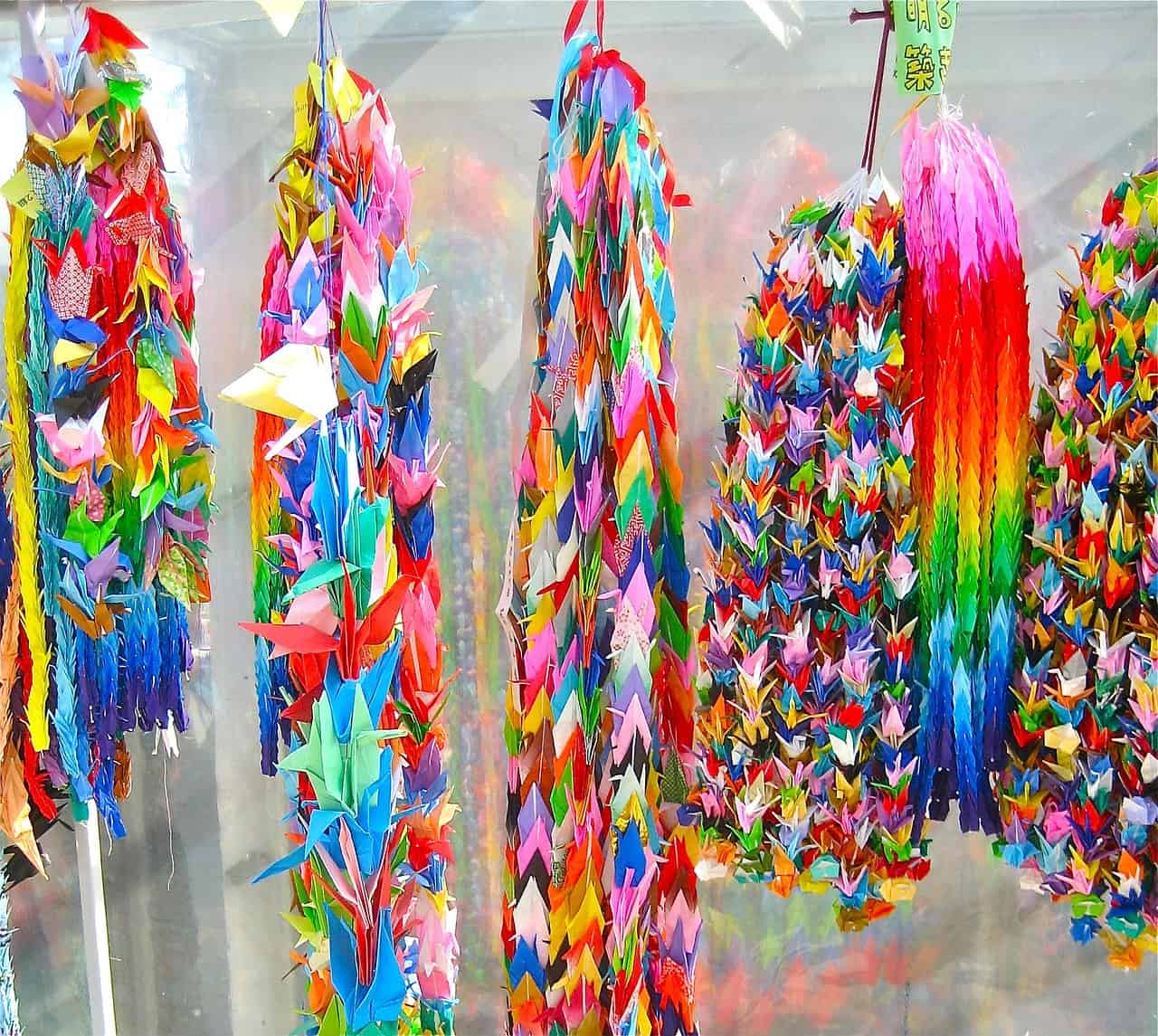
At the centre of the monument is a bronze statue of Sasaki, surrounded by booths of hundreds of colourful origami cranes brought by children visiting to remember her and to pray for a peaceful world.
How to Get to Hiroshima Peace Memorial Park
From Hiroshima Station it takes 15 minutes to the Atomic Bomb Dome stop (Genbaku Dome Mae 原爆ドーム前) by local loop bus called Hiroshima Meipuru ~ pu on the Orange route. Alternatively, it’s just over 20 minutes to walk from Hiroshima Castle.
How long to spend at the Hiroshima Peace Memorial Park
It depends how much time you have but we would recommend setting aside at least 90 minutes to 2 hours for the Peace Memorial Museum.
If you want to walk through the park to visit the monuments and see Atomic Bomb Dome as well, 3 hours should provide the time you need.
You may want to allow extra time if you plan to explore additional sites such as the Hiroshima National Peace Memorial Hall and Hiroshima City Peace Memorial Park Rest House.
Final Thoughts
Visiting the Hiroshima Peace Memorial Park is a unique experience that brings you closer to what happened both before and after the atomic bombing in Hiroshima.
You’ll learn stories of those affected and even read letters and diary entries that have survived and are kept in the museum.
Not only are there video testimonials of survivors at the Museum, but there are also live talks from survivors and their families.

Overall your journey will undoubtedly be an emotional journey, however one that will bring hope especially with monuments like the Children’s Peace Memorial with the thousands of colourful cranes.
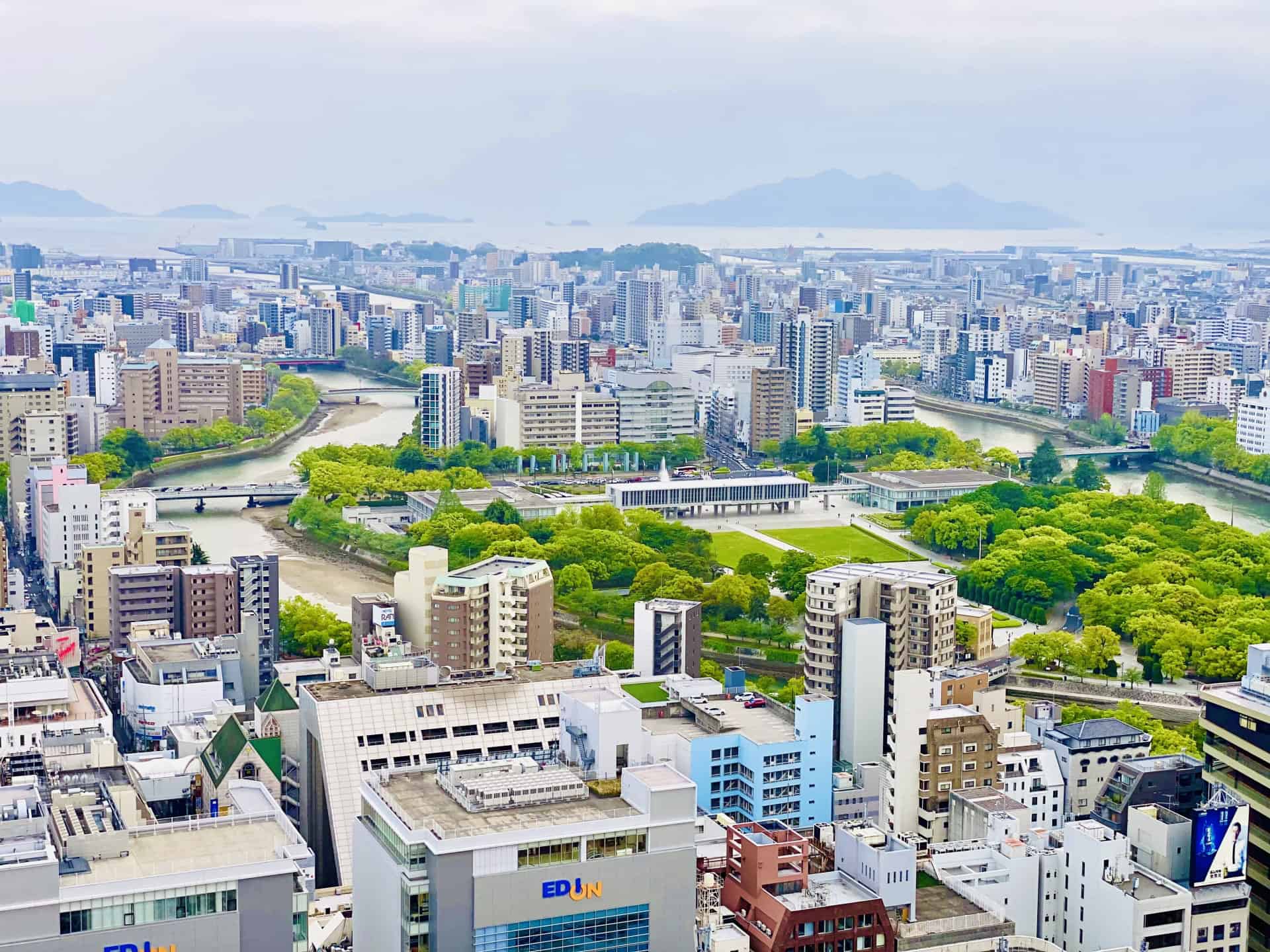
For more travel related posts, why not explore our travel section. If you’re interested in Japanese culture, check out our culture section, or head to our Instagram account for posts of fantastic restaurants, festivals, and travel experiences.
All the information and details are correct at the time of publishing. We would recommend checking each relevant website for the latest information.


